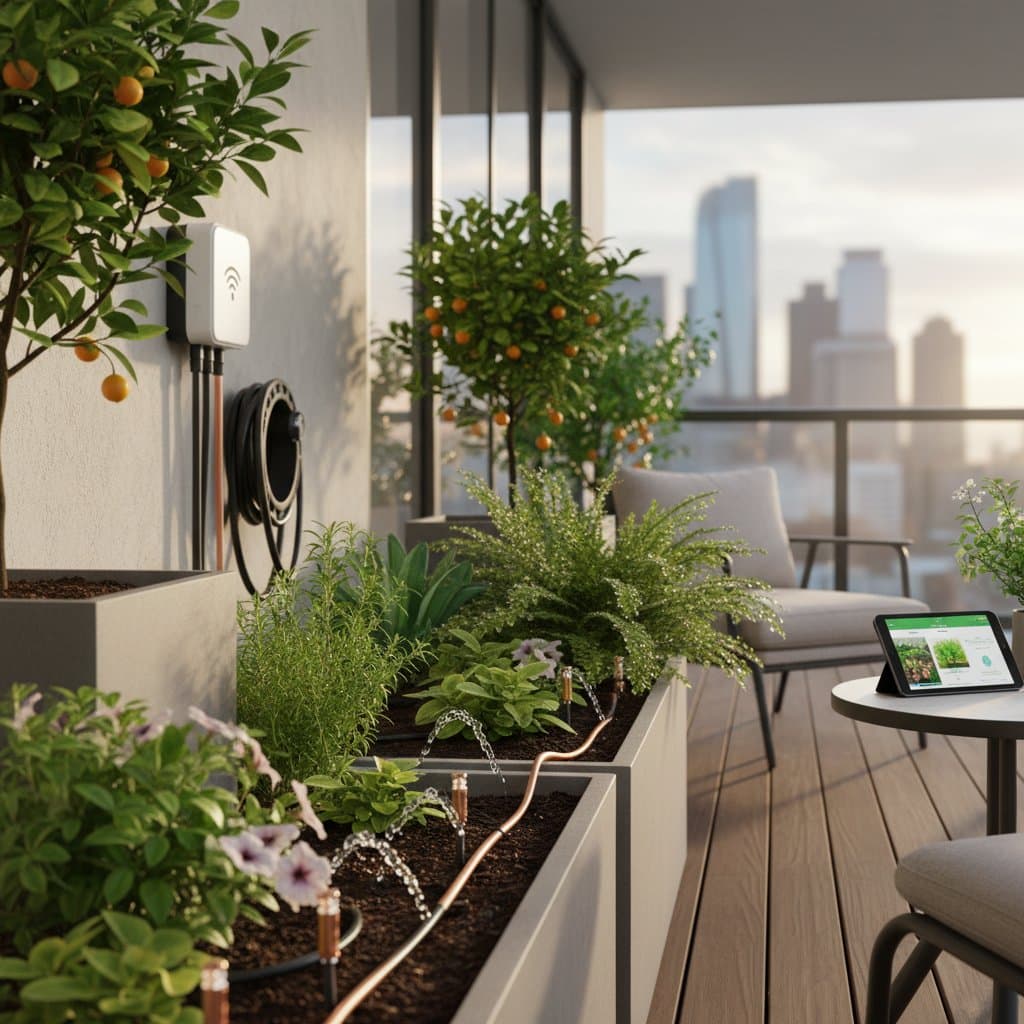Introduction to Micro Drip Irrigation for Balcony Gardens
Balcony gardens offer urban dwellers a touch of nature amid city life. However, travel often disrupts plant care routines, leading to wilted leaves and lost greenery. A micro drip irrigation system provides a reliable solution, delivering precise water amounts directly to plant roots without constant oversight.
This setup mimics natural rainfall in controlled doses, preventing overwatering or drought stress. Gardeners appreciate its efficiency, as it conserves water and adapts to various balcony configurations. With proper installation, plants receive consistent hydration, allowing owners to focus on their journeys.
Assessing Your Balcony Garden Needs
Evaluate the size and layout of your balcony space before selecting a system. Count the number of pots and note their arrangement, whether clustered on shelves or spread along railings. Consider plant types, as succulents require less frequent watering than ferns or vegetables.
Factor in sunlight exposure and seasonal changes. South-facing balconies may dry out faster in summer, necessitating higher flow rates. Measure available power sources, since some systems rely on timers plugged into outlets.
Document water access points, such as nearby faucets or hoses. This assessment ensures the chosen system matches your garden's demands and balcony constraints.
Essential Tools and Components
Gather basic tools for a smooth installation process. A drill with bits suited for plastic pots works well for securing tubing. Use sharp scissors or wire cutters to trim lines precisely.
Key components include a water source adapter, such as a faucet connector, and main supply tubing, typically 1/2-inch diameter for primary lines. Branch out with 1/4-inch drip lines equipped with emitters that release water at adjustable rates, from 0.5 to 2 gallons per hour.
Include a pressure regulator to maintain even flow and prevent bursts. A battery-operated timer automates cycles, while stakes or clips anchor tubing in place. Optional filters remove debris, extending system longevity.
Selecting the Right Kit
Choose kits based on garden scale. Starter sets for 10 to 20 pots suffice for small balconies, often including 50 feet of tubing and 20 emitters. Larger setups accommodate up to 50 plants with expandable lines.
Opt for UV-resistant materials to withstand outdoor exposure. Systems with adjustable emitters allow customization for diverse plant needs. Verify compatibility with standard faucets, which most urban setups feature.
Step-by-Step Installation Guide
Connect the system to your water source first. Attach the faucet adapter securely, then link the pressure regulator and filter inline. Run the main supply tubing along the balcony's edge, securing it with clips to avoid tripping hazards.
Distribute branch lines to individual pots. Punch holes in the main tubing using the provided tool, then insert 1/4-inch lines. Position emitters near plant bases, ensuring soil contact for optimal absorption.
Test the setup by turning on the water briefly. Observe for leaks and adjust flow rates as needed. Program the timer for daily or alternate-day cycles, starting with 10 to 15 minutes based on plant requirements.
Troubleshooting Common Setup Issues
If water flow seems uneven, check for kinks in the tubing and straighten them. Clogged emitters often result from mineral buildup; flush lines with a vinegar solution monthly. Ensure the timer batteries remain fresh to avoid interruptions.
For rail-mounted pots, use weighted stakes to hold lines steady against wind. In cold climates, drain the system before winter to prevent freezing damage.
Maintenance for Year-Round Reliability
Inspect the system weekly during active use. Look for dry spots around emitters, indicating blockages, and clean them with a soft brush. Wipe down tubing to remove dust, which can harbor algae.
Adjust watering schedules seasonally. Reduce frequency in fall as evaporation slows, and increase it during heatwaves. Monitor soil moisture with a simple finger test to fine-tune automation.
Store components properly during off-seasons. Coil tubing loosely and rinse all parts to eliminate residue. This routine preserves functionality and extends the system's lifespan beyond several years.
Winterizing Your Micro Drip System
Disconnect from the water source in late fall. Blow out remaining water using compressed air or a gentle faucet flush. Remove timers and store them indoors to protect batteries from moisture.
Cover exposed tubing with insulating wraps if mild freezes occur. Reassemble in spring after testing all connections for integrity.
Smart Upgrades for Enhanced Automation
Integrate a smart controller for remote monitoring via mobile apps. These devices connect to Wi-Fi, allowing schedule adjustments from anywhere. Soil moisture sensors provide real-time data, preventing over- or under-watering.
Solar-powered pumps offer an eco-friendly alternative, eliminating outlet dependency. Rain delay features pause cycles during wet weather, conserving resources.
For larger balconies, add expansion valves to scale up easily. These upgrades transform basic setups into sophisticated networks, ideal for frequent travelers.
Benefits of Automated Balcony Care
A well-maintained micro drip system ensures plants flourish without daily intervention. Owners return from trips to vibrant greenery, free from the guilt of neglected gardens. Water savings reach up to 50 percent compared to manual methods, benefiting both budgets and the environment.
This approach fosters sustainable urban gardening practices. Balconies become reliable oases, enhancing living spaces year-round. Embrace the freedom to explore while your plants thrive effortlessly.


